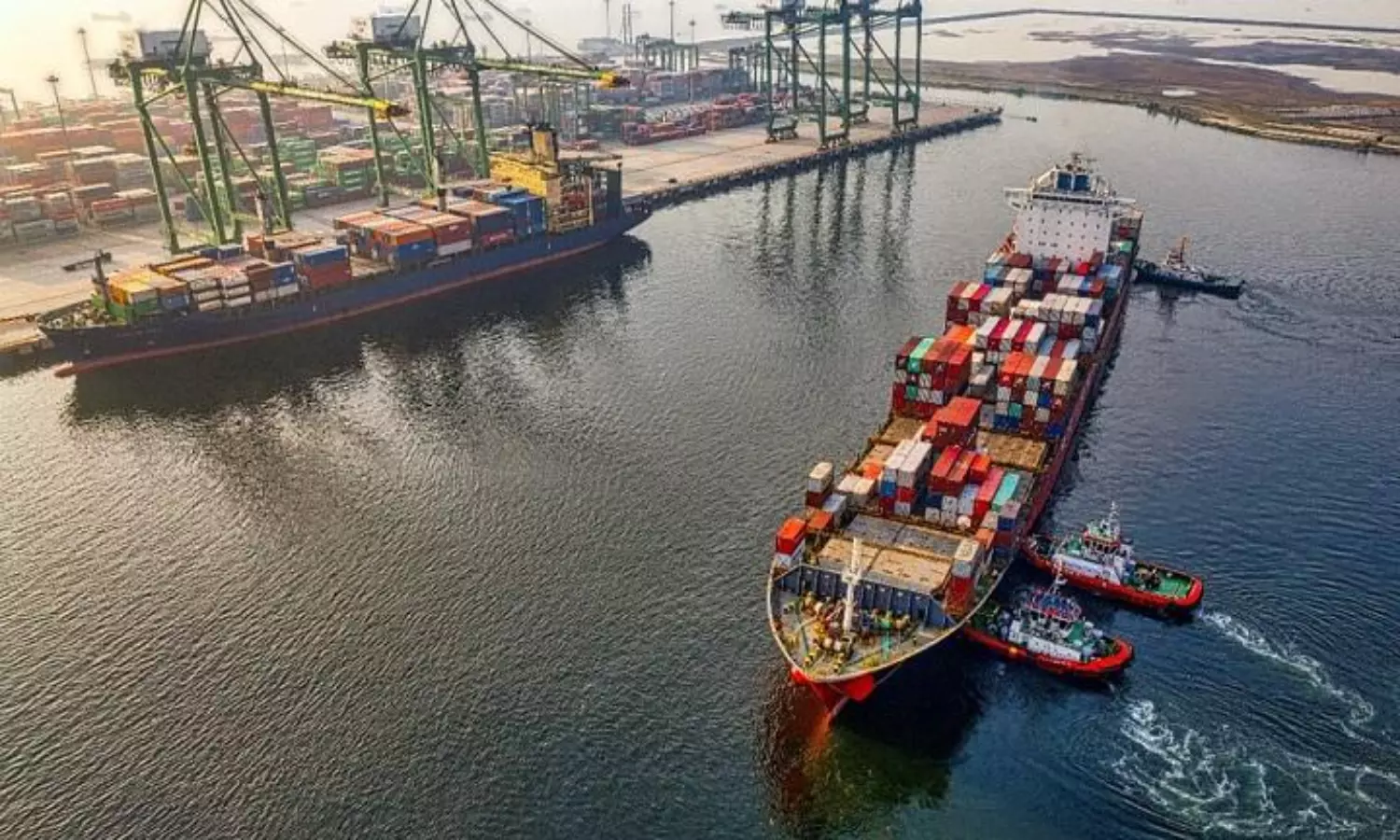Narrowing spread indicates easing of container shipping volatility
"It is also a case that the lower end of spot market will eventually increase as an overall market spike progresses."

The low-high spot market spread on the Far East to the U.S. East Coast trade increased from $1,000 per FEU in December 2023 to $5,450 at the end of June, driven almost entirely by increasing market high rates.
"By the end of June, the market-high rate was $5,640 per FEU higher than at the end of December while the market-low had risen by just $1,200 per FEU," says an update from Xeneta.
In July, the high-low spread narrowed considerably to $1,730 per FEU due to the market-low increasing by $5,600 between June 30 and July 24 to stand at $9,100. Meanwhile, at the high end of the market, the growth in spot rates has slowed significantly."
The huge increases in the low rates partly reflects the market playing catch up, the update added. "The dynamics that kept the low end of the spot market subdued are reducing as new long-term rates are negotiated and enter validity. This means the discounted rates offered to those pushed onto the spot market to protect against containers being rolled, are being discontinued.
"It is also a case that the lower end of the spot market will eventually increase as an overall market spike progresses (unless the upper end of the market collapses first).
"It must be remembered that the market-low and market-high represent the extremes of the market at the 2.5th and 97.5th percentile. For example, looking at the Far East to the U.S. East Coast, the low end of the spot market in the first half of 2024 is dominated by a few carriers offering low rates out of Japan."
The spread between the market mid-high and mid-low is naturally much smaller than between the market-high and market-low, says Xeneta. "But smaller movements here are arguably even more important as the spread between mid-high and mid-low represents rates for 50 percent of the market, compared to five percent at the market-high and market-low.
"On July 24, the spread between the market mid-high and mid-low between the Far East and the U.S. East Coast stood at $490 per FEU. In the initial round of spot rate increases, it rose up to $2,040 per FEU in mid-January. Year-to-date, the mid-high to mid-low spread on this trade has averaged $830 per FEU, close to four times the pre-pandemic average of around $200 per FEU. It is, however, still considerably lower than the over $2,000 per FEU spread averaged in the pandemic years."
The long-term market
On the long-term market, the spread between the market-high and market-low on major trades is increasing – although the key drivers on long-term rates are different to those on the short-term market, the update added.
"While there is still an element of different shipper profiles being offered different rates (such as bigger volume shippers getting lower long-term rates), the increasing market-high is mostly explained by the spot market starting to rub off on long-term rates.
"This is seen in long-term contracts entering validity in July with some new contracts negotiated in the past two months during the second spike in the market coming in higher than the agreements they are replacing.
"Long-term rates at the highest end of the market on the Far East to North Europe trade have gone from not passing $5,000 per FEU in May and June to now rising to $9,000 per FEU. This means the market-high has jumped to $6,560 per FEU on July 24, up 80 percent from the end of June."
However, it should be noted that the majority of new contracts entering validity in July remain at much lower levels, meaning the increase in the average rate has been much lower, says Xeneta. "New long-term rates entering validity in July between the Far East and North Europe are averaging $2,800 per FEU, which is 33 percent higher than new contracts which entered validity in June.
"This highlights that there are still plenty of long contracts coming in at lower levels. The market low between the Far East and North Europe is still down at $1,230 per FEU.
This suggests carriers are still thinking longer term and looking to maintain relationships with their most important (often bigger volume shippers) by offering lower long-term contracts, the update added.


